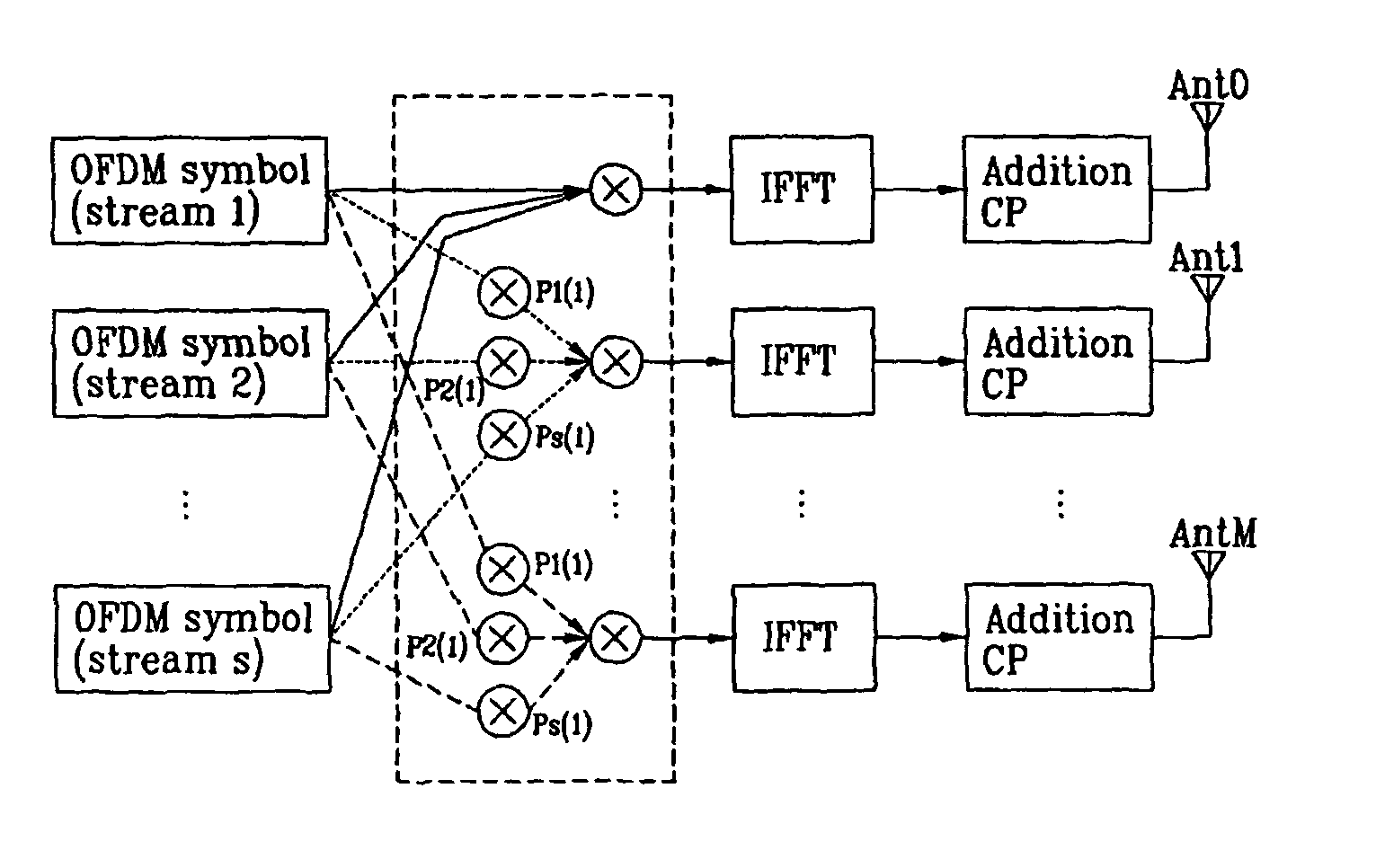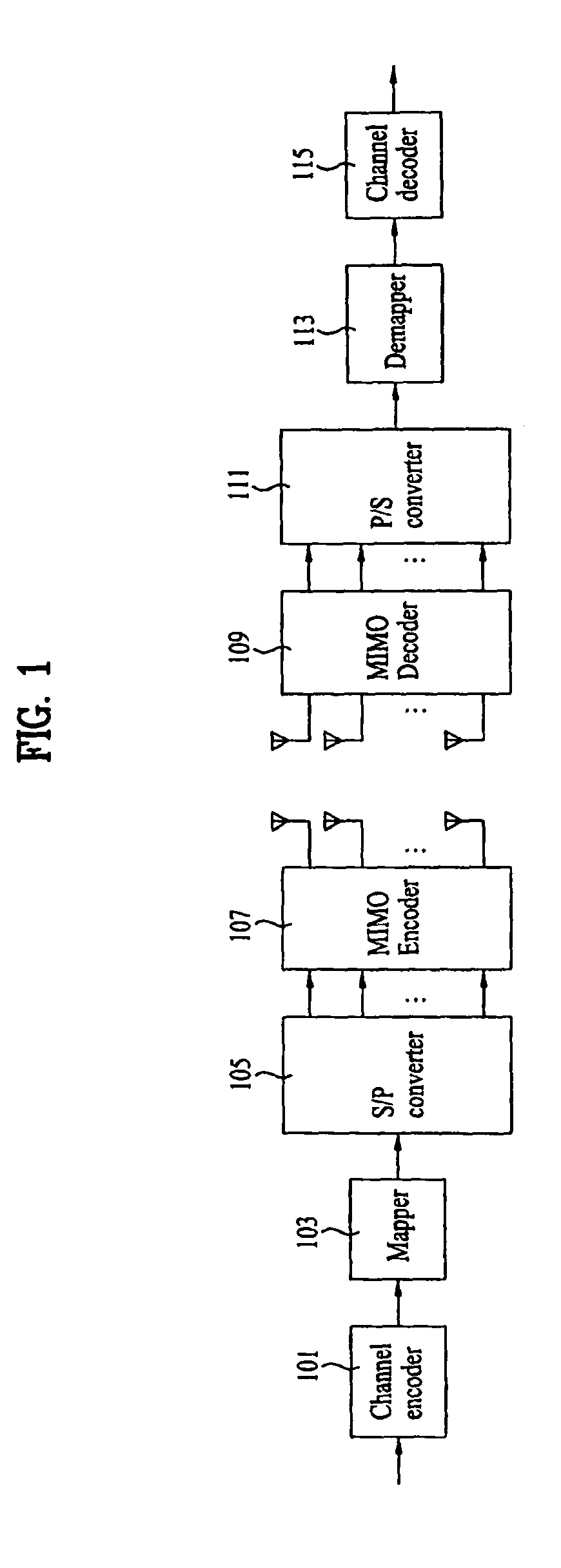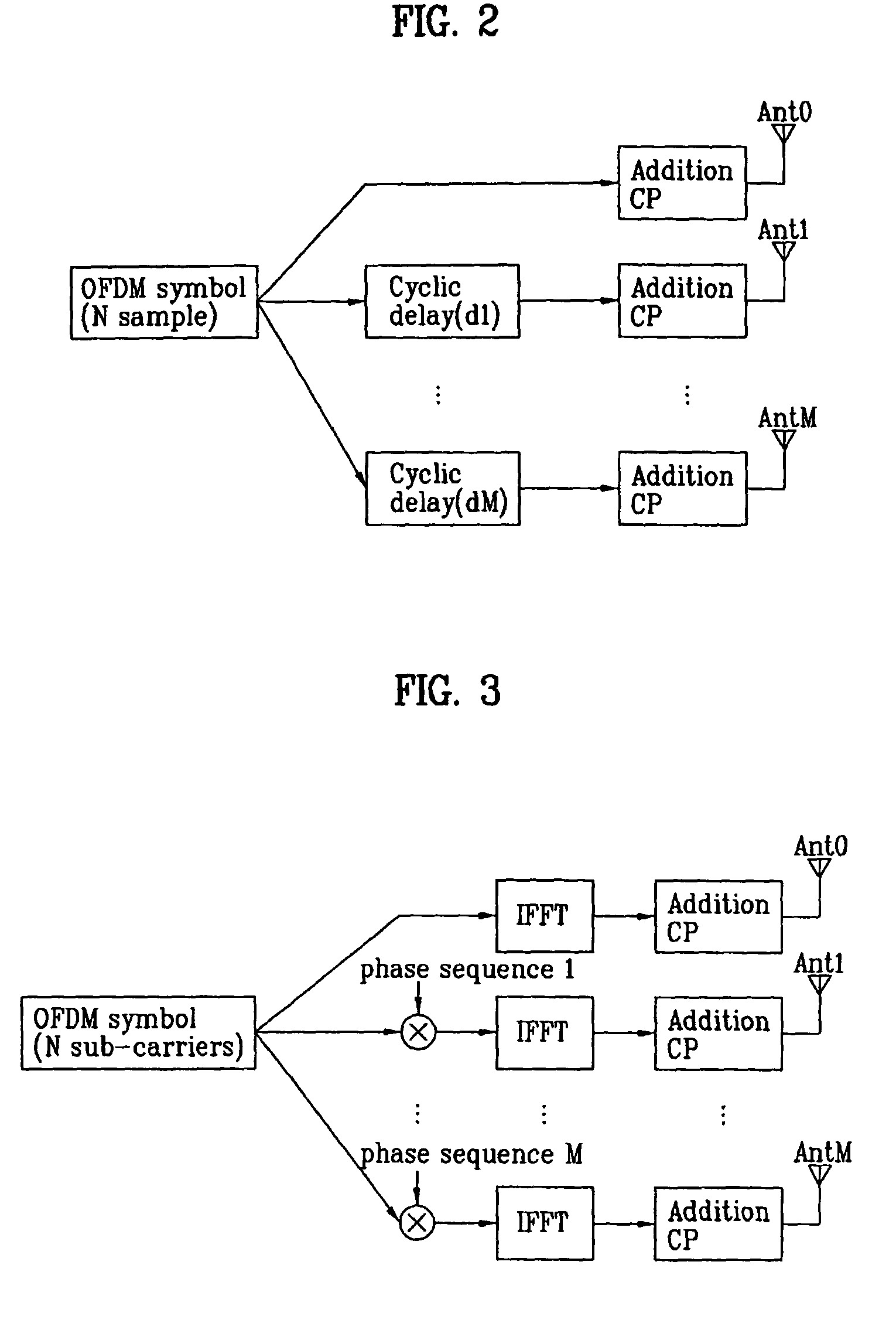Method for transmitting/receiving data in a multiple-input multiple-output system using multi-carrier
a data transmission and multi-output technology, applied in the field of multi-input multiple output (mimo) systems, can solve the problems of increasing system complexity and costs, unavoidably increasing the complexity and inability to expect the high data transmission date, so as to achieve effective communication, increase communication efficiency, and facilitate the design of the transmission/reception end
- Summary
- Abstract
- Description
- Claims
- Application Information
AI Technical Summary
Benefits of technology
Problems solved by technology
Method used
Image
Examples
embodiment 1
Phase-Shift-Based Precoding Matrix
[0059]FIG. 5 is a block diagram illustrating the principal components of a transmission / reception end of the phase-shift-based precoding according to the present invention.
[0060]Referring to FIG. 5, the phase-shift-based precoding method transmits all streams to be transmitted via all antennas, multiplies the Tx streams by sequences of different phases, and transmits the multiplied result. Generally, if a phase sequence generated by a small cyclic delay value is used, the frequency selectivity in a channel occurs in the receiver, and the channel capacity increases or decreases according to frequency bands. In other words, the transmitter can select a specific part having good channel quality among frequency bands fluctuating by a relatively small cyclic delay value, and than allocate the selected part to a user equipment (UE) to get scheduling gain.
[0061]In this case, the present invention may use the phase-shift-based precoding matrix to apply a cy...
embodiment 2
Phase-Shift-Based Precoding Matrix According to Generalized Phase Shift Diversity Scheme
[0072]If the number of antennas is Nt (where Nt is a natural number of at least 2) and the spatial multiplexing rate is R, the phase-shift-based precoding matrix can be represented by the following equation 5. The phase-shift-based precoding matrix of Equation 5 is represented by the generalized format of the conventional phase shift diversity scheme. The MIMO scheme of Equation 5 may also be referred to as a generalized phase shift diversity (GPSD) scheme.
[0073]PNt×Rk=(w1,1kw1,2k…w1,Rkw2,1kw2,2k…w2,Rk⋮⋮⋱⋮wNt,1kwNt,2k…wNt,Rk)=(ⅇjθ1k0…00ⅇjθ2k…0⋮⋮⋱⋮00…ⅇjθNtk)(UNt×Rk)[Equation5]
[0074]As can be seen from Equation 5, the phase-shift-based precoding matrix is implemented by the product of a phase shift diagonal matrix including the resource index k and a unitary matrix.
[0075]In this case, PNt×Rk is indicative of a phase-shift-based precoding matrix of the k-th sub-carrier of the MIMO-OFDM s...
embodiment 3
Extended-Diagonal Matrix Addition of Phase-Shift-Based Precoding Matrix
[0090]If Equation 5 or 7 is extended, the phase-shift-based precoding matrix of the following equation 10 can be constructed.
[0091]PNt×Rk=(w1,1kw1,2k…w1,Rkw2,1kw2,2k…w2,Rk⋮⋮⋱⋮wNt,1kwNt,2k…wNt,Rk)=D1(UNt×Rk)D2=(ⅇjθ1k0…00ⅇjθ2k…0⋮⋮⋱⋮00…ⅇjθNtk)(UNt×Rk)(ⅇjθ′1k0…00ⅇjθ′2k…0⋮⋮⋱⋮00…ⅇjθ′Rk)[Equation10]
[0092]Compared with Equation 5, Equation 10 includes a first diagonal matrix D1 and a second diagonal matrix D2. In this case, each row and each column of the phase-shift-based precoding matrix have independent phases, resulting in the implementation of a variety of frequency diversity gains.
[0093]FIG. 6 graphically shows two examples of the phase-shift-based precoding method according to the size of a delay sample.
[0094]As can be seen from FIG. 6, in the case of using a large sample delay value (or a cyclic delay value), a frequency-based channel status variation time becomes reduced, and the poss...
PUM
 Login to View More
Login to View More Abstract
Description
Claims
Application Information
 Login to View More
Login to View More - R&D
- Intellectual Property
- Life Sciences
- Materials
- Tech Scout
- Unparalleled Data Quality
- Higher Quality Content
- 60% Fewer Hallucinations
Browse by: Latest US Patents, China's latest patents, Technical Efficacy Thesaurus, Application Domain, Technology Topic, Popular Technical Reports.
© 2025 PatSnap. All rights reserved.Legal|Privacy policy|Modern Slavery Act Transparency Statement|Sitemap|About US| Contact US: help@patsnap.com



